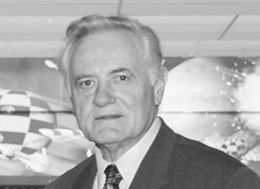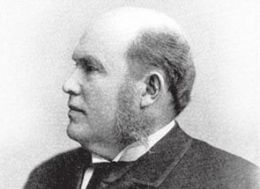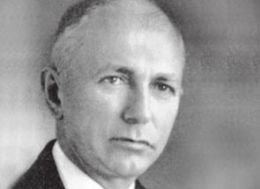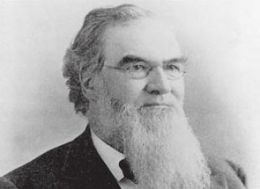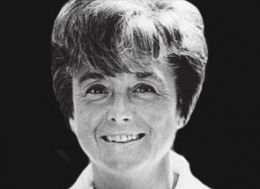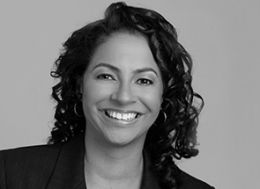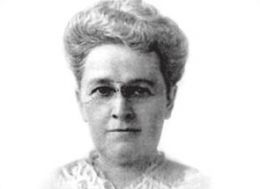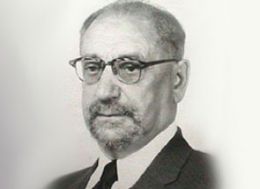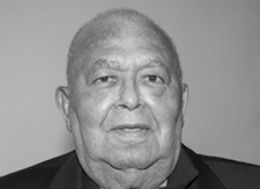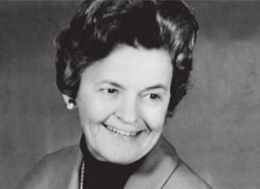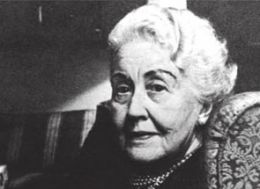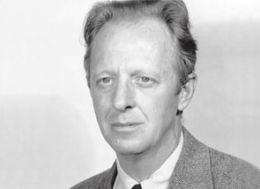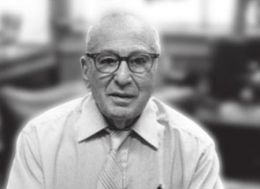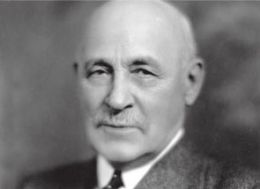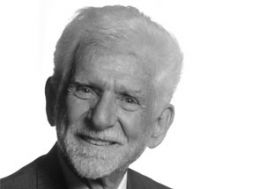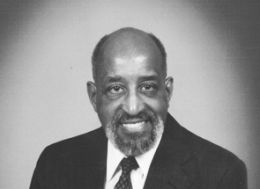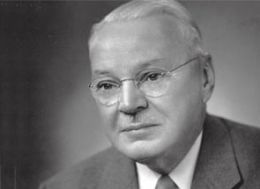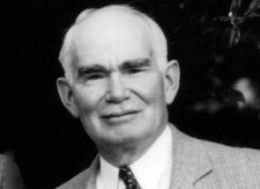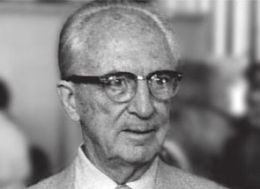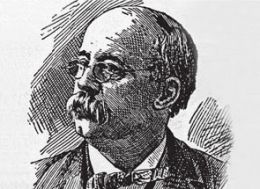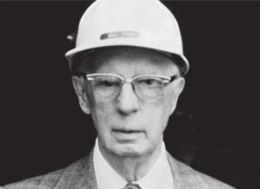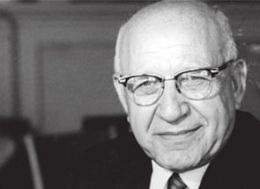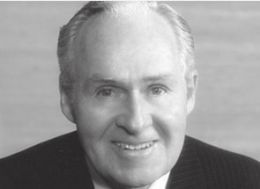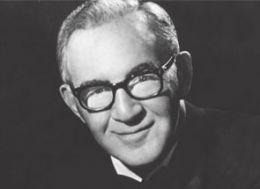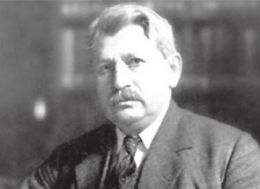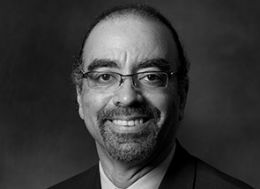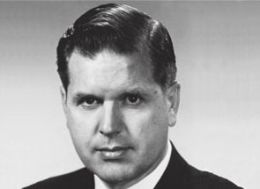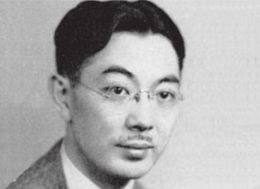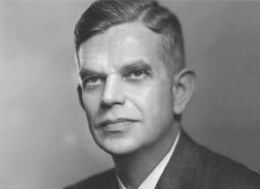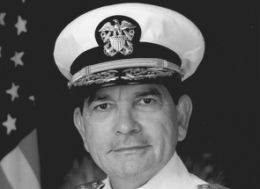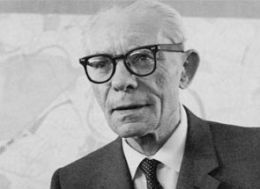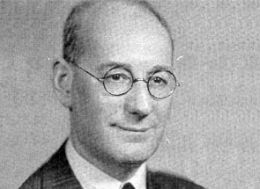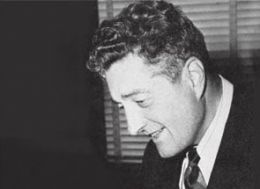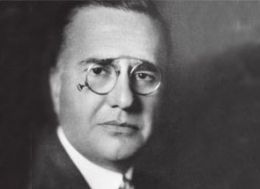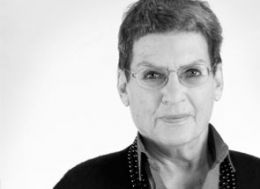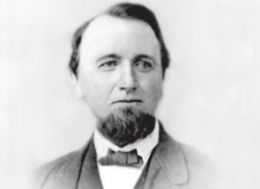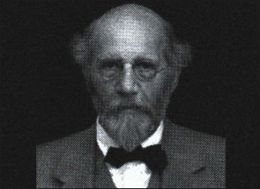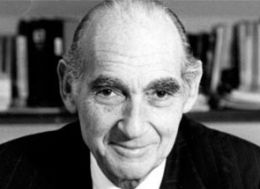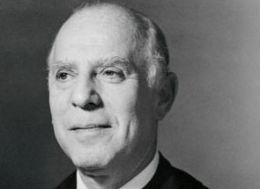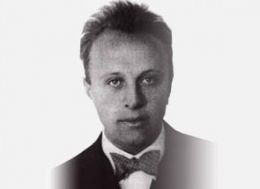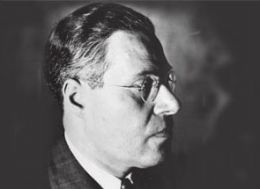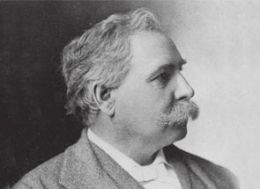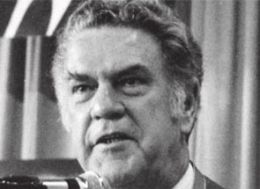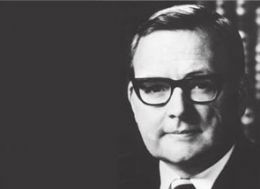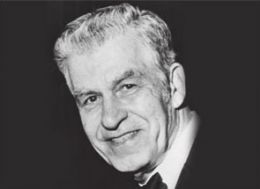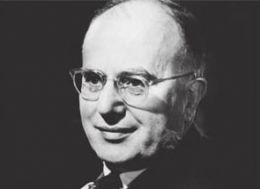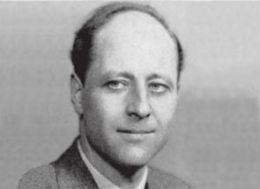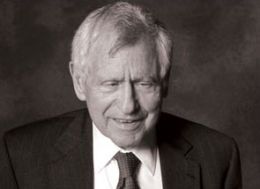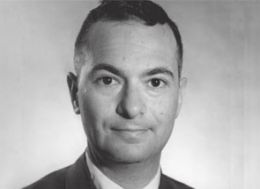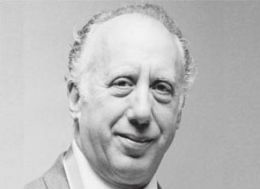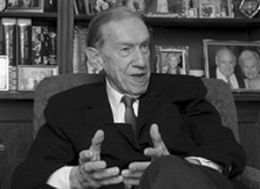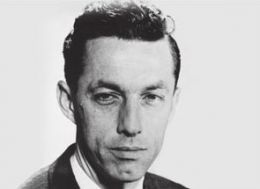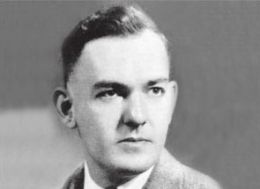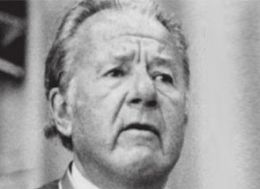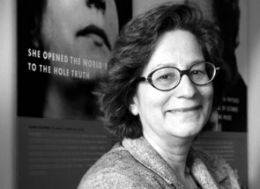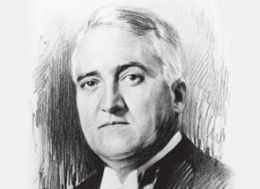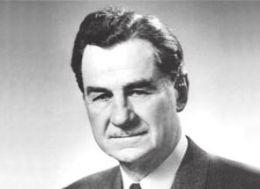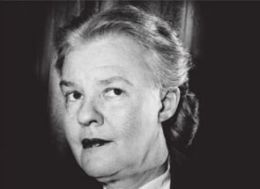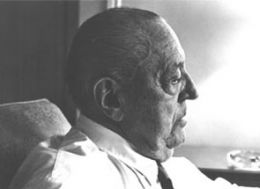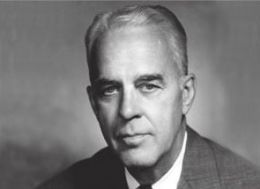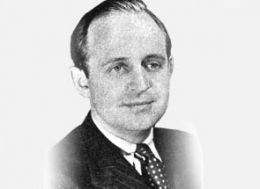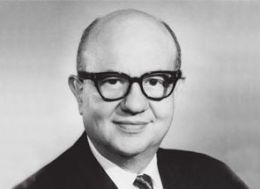Throughout the university's history, the Illinois Institute of Technology community has been fortunate to have the support of exceptional trustees, alumni, faculty, and friends. Their outstanding contributions and achievements are represented by their inclusion in the Illinois Institute of Technology Hall of Fame.
Read more about the achievements of Illinois Tech faculty, staff, and alumni in Illinois Tech Magazine.
Valdas V. Adamkus
Civil Engineering 1961, Hon. Ph.D. 1999
Valdas V. Adamkus (CE ’61, Hon. Ph.D. ’99), a Lithuanian immigrant, had a 27-year career with the United States Environmental Protection Agency, after which he returned to his homeland to serve as president for two terms [1998–2003, 2004–09]. Adamkus’s career with the EPA was capped by his appointment as administrator of EPA Region 5, responsible for all air, water, hazardous waste, and other pollution-control efforts in Illinois, Indiana, Michigan, Minnesota, Ohio, and Wisconsin. In 1985 President Ronald Reagan presented him with the President’s Award for Distinguished Federal Civilian Service.
Philip Danforth Armour Sr.
Founders Group
Business tycoon, captain of industry, philanthropist, the richest man in Chicago—all of these terms identify Philip Danforth Armour Sr. Inspired by minister Frank Wakely Gunsaulus’s vision of building a school to provide accessible higher education to all, Armour gave $1 million in 1890 to found Armour Institute, a predecessor of Illinois Tech. His initial gift multiplied several times over as he, his spouse, Malvina Belle Ogden, and their son J. Ogden each contributed to the growth and support of the college from their own personal wealth for the next 30 years.
Alex D. Bailey
Founders Group
A graduate of Lewis Institute and a member of the Lewis Institute Board of Trustees, Alexander D. Bailey served as board chairman. In his professional life he was an executive within the Commonwealth Edison power plant system. In 1939 Bailey and Armour Institute of Technology board chairman James D. Cunningham announced the merger of the two institutes to form Illinois Institute of Technology. Following the merger, Bailey served on the Illinois Tech Board of Trustees until his death.
Joseph M. Bailey
Founders Group
Along with Thomas A. Moran, Joseph M. Bailey, a former chief justice of Illinois, co-founded the Chicago Evening Law Class, which later became the Chicago College of Law (the law department at Lake Forest University), with Bailey serving as dean from 1888 to 1895. Chicago College of Law later merged with Kent College of Law to form Chicago-Kent College of Law; in 1969 Chicago-Kent became Illinois Tech’s law school.
Florence K. Bassett
Architecture 1941
A prolific architect, design consultant, and furniture designer, Florence K. Bassett created the Knoll Associates Planning Unit, which she also directed for many years. She helped to set the standards for modern interior design. Her work has been designated “good design” by the Museum of Modern Art. The American Institute of Architects awarded her its Gold Medal for professional excellence.
Andrea Berry
Computer Science 1984
Andrea Berry, an Illinois Institute of Technology Life Trustee, is the senior vice president and general manager of the broadcast, TV, and film division for the Production Resource Group, where she manages global teams that create technology solutions for live television sports, entertainment, and news as well as scripted and unscripted projects for film and television. Inducted into the Sports Broadcasting Hall of Fame, Berry has served as an award-winning broadcast media executive for the FOX and CBS television networks. She is on the boards of the Sports Video Group and the DuSable Museum of African American History. Berry is a recipient of four Outstanding Technical Team Remote Emmy awards and was also recognized by the Alliance for Women in Media for STEM Leadership in Media. Berry received the Technology Leadership Award from Broadcasting & Cable magazine and the Women in Technology Leadership Award from TVNewsCheck, and she participates in many organizations advocating STEAM education and diversity.
Julia A. Beveridge
Staff Member
For more than three decades Julia A. Beveridge was involved with Armour Institute of Technology. She first benefited the institute through Plymouth Church and Armour Mission, where she taught practical skills to neighborhood children and served as librarian. Recruited by Philip Armour and Frank Gunsaulus to help staff Armour Institute of Technology from its inception, Beveridge served as registrar and assistant librarian, and then as librarian for the last 20 years until her death in 1919.
David P. Boder
Professor and Chair, Department of Psychology 1927–1952 Illinois Tech and Lewis Institute
David P. Boder was a former faculty member and head of the Department of Psychology and Philosophy at Chicago’s Lewis Institute (one of Illinois Tech’s predecessor colleges), and researcher of displaced persons later known as Holocaust survivors. In 1946 Boder traveled from Illinois Tech to Eastern Europe, taking with him a 50-pound wire recorder and 200 spools of carbon steel wire on which he recorded 119 interviews with individuals. These interviews provide the first and only known audio record of this important part of history. His 1949 book, I Did Not Interview the Dead, captures eight of these stories. Materials from Boder’s Voices of the Holocaust project were placed on permanent loan to the Illinois Holocaust Museum, which opened in Skokie in 2009, and the United States Holocaust Museum has since re-interviewed survivors.
Robert “Pete” H. Bragg Jr.
Physics 1949, M.S. 1951, Ph.D. 1960
Robert H. “Pete” Bragg II was an expert in X-ray crystallography and X-ray diffraction, and their applications to the structure and electronic properties of carbon materials. Bragg worked at Dover Electroplating Company, Portland Cement Association Research Laboratory, and Lockheed Missiles and Space Company. In 1969 he accepted a full professorship and joint appointment in the Lawrence Berkeley National Laboratory at the University of California, Berkeley, where he was the only African American in his department until 1987. Bragg moved up the ranks in the military and served as a United States Army lieutenant in World War II. He was awarded a Fulbright Fellowship in 1992 to conduct research for one year at Obafemi Awolowo University in Nigeria. A fellow of the National Society of Black Physicists, Bragg received the society’s Lifetime Achievement Award in 2015.
Rowine H. Brown Truitt
Law 1961
A humanitarian in medicine and the law, Rowine H. Brown Truitt significantly advanced a humanitarian approach to medical treatment in hospitals and to the rule of law in society. As medical director and chief of staff at a major United States hospital (Cook County Hospital, now John H. Stroger Jr. Hospital)—the first woman to hold this position—she pioneered advances in medicine, law, and the interaction of the two, particularly in the area of child abuse.
Fanny Butcher
Lewis Institute 1908
Fanny Butcher was owner of the popular Chicago bookstore Fanny Butcher Books, which became a literary salon. She was also a renowned literary critic and columnist for the Chicago Tribune. Butcher’s autobiography, Many Lives, One Love, chronicles her friendships with such major literary figures as Ernest Hemingway, Sinclair Lewis, and Edna Ferber.
Alfred Caldwell
Architecture 1942, M.Arch. 1947
Influential Prairie School landscape architect Alfred Caldwell was the first full-time faculty member in Illinois Tech’s department of architecture in the College of Architecture, planning, and design. A protégé of noted landscape architect Jens Jensen, he was also influenced by Ludwig Mies van der Rohe. Caldwell’s many contributions to Chicago include the Lincoln Park Zoo Rookery, Promontory Point near Hyde Park, and the addition of groves to Illinois Tech’s Main Campus.
Marvin Camras
Electrical Engineering 1940, M.S. 1942
Chicago native Marvin Camras created an innovative magnetic recording head during his undergraduate years that improved sound quality by impressing a recording symmetrically on a wire by the gap of air between the wire and the head. His research led to developments that underlie many modern recording and communication techniques. Camras received numerous awards for his work, most notably the 1990 National Medal of Technology and Innovation.
George N. Carman
Founders Group
George N. Carman served as director of Lewis Institute from its founding. He was a leader in the field of higher education, pioneering the junior college system and school accreditation. Though the term was not then used, Lewis Institute was the first junior college in the United States. Carman also was one of the originators of the North Central Association of Colleges and Secondary Schools.
Martin Cooper
Electrical Engineering 1950, M.S. 1957
Martin “Marty” Cooper developed an early version of the mobile handheld cell phone in the 1960s in response to a Chicago police superintendent’s request for a device that would help keep officers connected while working their beats. Cooper, a senior engineer at Motorola, and his team outfitted the officers with a microphone and an antenna that they wore on their shoulders, using an early type of a cellular system. In the early 1970s, Cooper’s team developed not only the first handheld cell phone but also a system to support it. In 1973 Cooper placed the first mobile cell phone call—phoning his counterpart at Bell Labs, Joel Engel. Today Cooper is considered a global thought leader on personal communication devices, wireless technology, and spectrum use. He is the recipient of numerous honors and awards, including the National Academy of Engineering Charles Stark Draper Prize and the Prince of Asturias Award for technical and scientific research. He is a fellow of the IEEE and the Radio Club of America, and a member of the National Academy of Engineering.
Frank A. Crossley
Chemical Engineering 1945, M.S. Metallurgical Engineering 1947, Ph.D. Metallurgical Engineering 1950
Frank Crossley broke ground three times: He was the first African-American United States Navy officer, the first person to earn a Ph.D. in metallurgical engineering at Illinois Institute of Technology, and the first person of African ancestry in the world to earn a Ph.D. in the field. His successes in the military led then President Harry S. Truman to issue an executive order in 1948 to desegregate the U.S. Armed Forces. Crossley went on to become a professor and department head of foundry engineering at Tennessee State University, and held research positions with IIT Research Institute, Aerojet TechSystems Company, and Lockheed Missile and Space Company, where he earned a patent for inventing a new class of titanium alloys. He eventually received a total of seven patents and authored more than 60 papers.
James D. Cunningham
Founders Group
Orphaned by the age of 13, James D. Cunningham was a successful Chicago businessman who achieved success in the classic American rags to riches story. In 1932 he accepted the chairmanship of the Armour Institute of Technology Board of Trustees. Seven years later Cunningham and Alexander D. Bailey, chairman of the Lewis Institute Board of Trustees, announced the merger of the two institutes to form Illinois Institute of Technology. Cunningham then accepted the board chairmanship of the newly created Illinois Tech, which he held until 1961.
Lee de Forest
Faculty 1899-1901
Lee de Forest served as a faculty member at Armour Institute of Technology and Lewis Institute during the turn of the twentieth century. During that time he conducted his first long-distance broadcasts from the roof of Main Building. He invented the Audion three-element vacuum tube; the resulting tube amplified electric signals and served as a fast-switching element that later would be used in digital electronics. De Forest also patented a method of recording sound on film that the movie industry would later adopt. He received an honorary Oscar, was given a star on the Hollywood Walk of Fame, and was inducted posthumously into the National Radio Hall of Fame.
Lloyd H. Donnell
Faculty 1939–1962
A mechanical engineering faculty member from 1939–1962 and an internationally renowned expert in engineering mechanics, Lloyd H. Donnell is best known for formulating the Donnell equations, which simplify the equations for the design of thin-walled shells such as storage tanks, rockets, and submarine hulls. He was founding editor of Applied Mechanics Reviews, the bi-monthly magazine published by the American Society of Mechanical Engineers.
Marshall D. Ewell
Founders Group
A respected lawyer, educator, and doctor, Marshall D. Ewell founded Kent College of Law, which merged with Chicago College of Law in 1900 to become Chicago-Kent College of Law. Chicago-Kent merged with Illinois Tech in 1969. He is credited with helping to move the study of law out of judges’ chambers and into the academic arena of university classrooms, thereby emphasizing the benefits of formal academic study as entry into the fields of law and public office.
William F. Finkl
Chemical Engineering 1918
Former chairman of A. Finkl & Sons Co. (now Finkl Steel), the steel company his grandfather founded in 1879, William F. Finkl introduced quality control into the steel industry. He invented numerous steel alloys, particularly those used in creating forging dies, and patented manufacturing processes for steel fabrication. Finkl was a member of the Illinois Tech Board of Trustees beginning in 1948. In 1980 Illinois Tech’s interactive television network was named in his honor.
Max Frocht
Faculty 1946–1960
A Polish émigré, Max Frocht served on Illinois Tech’s mechanical engineering faculty from 1946–1960 and then directed the university’s Laboratory for Experimental Stress Analysis. His classic two-volume treatise on photoelasticity was translated into Russian, Spanish, and Chinese. The M. M. Frocht Award, created in his honor, is presented annually by the Society for Experimental Mechanics and recognizes “outstanding achievement as an educator in the field of experimental mechanics.”
Robert W. Galvin
Benefactor
Robert W. Galvin transformed Motorola into a global leader in the manufacture and distribution of cellular phones and other telecommunications devices. Under his leadership, Motorola developed the Six Sigma quality improvement strategy, earning it the first Malcolm Baldrige National Quality Award in 1988. He became an Illinois Tech trustee in 1953 and served as board chairman from 1979–1990. He and Robert A. Pritzker co-initiated the IIT Challenge Campaign with their $120 million gift in 1996. He received the National Medal of Technology and Innovation in 1991 and was elected a member of the National Academy of Engineering in 2002.
Myron Goldsmith
Architecture 1939, M.S. 1953
Illinois Tech students on Mies Campus walk around the legacy of Myron Goldsmith every semester. A star student of famed architect and university leader Ludwig Mies van der Rohe, “Goldy” left his mark on campus by designing three landmark buildings on the campus he walked for years: Arthur Keating Hall, Robert A. Pritzker Science Center, and John T. Rettaliata Engineering Center. He also spent decades teaching Illinois Tech students and earned a Fulbright grant to study with renowned Italian structural engineer and architect Pier Luigi Nervi. Goldsmith’s influence isn’t limited to campus—he designed 40 projects during a nearly 30-year tenure with Chicago-based Skidmore, Owings & Merrill, including the McMath-Pierce Solar Telescope in Arizona and RingCentral Coliseum, also known as Oakland Coliseum.
Benny Goodman
Honorary LL.D 1968
Known as the “King of Swing,” Benny Goodman attended Lewis Institute in 1923 as a high school sophomore while also playing the clarinet in a dance hall band. In 1938 he brought his music from the dance floor to international recognition of swing in a historic concert in New York’s Carnegie Hall.
Frank W. Gunsaulus
Founders Group
Frank W. Gunsaulus was a noted preacher, educator, and pastor of Plymouth Congregational Church who delivered the “Million Dollar Sermon,” which inspired Philip Danforth Armour Sr. to found Armour Institute. Gunsaulus then served as the school’s president for nearly 30 years. He was an avid book and art collector, and a noted authority on rare manuscripts and Wedgwood Pottery.
Marc Hannah
Electrical Engineering 1977
Marc Hannah, an Illinois Institute of Technology Life Trustee, co-founded Silicon Graphics, Inc. (SGI) and worked to grow the company from a small startup to a multibillion-dollar computer hardware and software company, with products from desktop workstations to large, multiprocessor supercomputers. He helped to pioneer 3D rendering hardware used in varied applications from designing the Boeing 777 to dinosaurs in the movie Jurassic Park to the Nintendo-64 3D gaming system. When Hannah left SGI (acquired by HPE in 2016) in 1997, he was vice president and chief scientist. Since then, he has consulted on projects for various companies, and he has had leadership positions in multiple startups, including vice president of technology for Omniverse Digital Solutions, vice president of product architecture for Pulsent Corporation, and chief technology officer for SongPro. Hannah has also served on several corporate boards and is a partner in the real estate development company Strategic Urban Development Alliance.
Grant L. Hansen
Electrical Engineering 1948
An aerospace innovator and Pearl Harbor survivor, Grant L. Hansen was instrumental in achieving both technical excellence and rapid progress for the United States space exploration program. He was elected to the National Academy of Engineering in 1977 for contributions to and engineering management of major missile programs.
Samuel I. Hayakawa
Faculty 1939–1948
Samuel I. Hayakawa was an Illinois Tech English faculty member from 1939–1948 and an internationally recognized semanticist. During his Illinois Tech tenure, he published his first book on the meaning of language, the best-selling Language in Thought and Action. He served as president of San Francisco State University from 1968–1973, and in 1977 took office as a United States senator from California at age 70.
Henry T. Heald
Founders Group
As president of Armour Institute of Technology, Henry T. Heald was one of the key people responsible for the merger of Armour with Lewis Institute to create Illinois Institute of Technology in 1940. Healed served as president of Illinois Tech from 1940–1952, during which time he established the quality of the faculty by recruiting outstanding American and European scholars during World War II, including Ludwig Mies van der Rohe. Under his guidance, Illinois Tech developed from a small engineering school into a significant technology center. Upon retirement from academia in 1956, Heald served as president of The Ford Foundation. He appeared on the cover of Time magazine in 1957.
Vice Admiral Diego E. Hernandez, Retired
Physics 1955
Vice Admiral Diego E. Hernandez’s military career spanned from 1955–1991. A naval aviator, he piloted fighter jets from several aircraft carriers and went on to lead 147 combat missions in Vietnam. In 1980 Hernandez became commanding officer of the USS John F. Kennedy and was the first Hispanic to serve as commanding officer of a United States Navy aircraft carrier. In 1982 he was named commander of U.S. Naval Forces Caribbean and in 1986 became commander of the U.S. Third Fleet. He also served as deputy commander-in-chief of the U.S. Space Command as well as vice commander-in-chief of the North American Aerospace Defense Command. Before his retirement, he was the highest-ranking Hispanic in the U.S. military. Hernandez’s military awards include the Silver Star, Purple Heart, Distinguished Flying Cross, and the Navy Distinguished Service Medal. Hernandez’s homeland of Puerto Rico presented him with the National Puerto Rican Coalition Life Achievement Award in 1987.
Ludwig C. Hilberseimer
Faculty 1938–1967
Ludwig C. Hilberseimer was an associate of Ludwig Mies van der Rohe at the Bauhaus who joined Mies at Armour Institute of Technology in 1938 and taught at Illinois Tech until his death in 1967. The founder and chair of Illinois Tech’s Department of City and Regional Planning, Hilberseimer was an advocate of “breathing space” around downtown buildings and is credited with helping change Chicago’s building codes to encourage such space.
Martin C. Jischke
Physics 1963
A Chicago-area native, Martin Jischke spent his time at Illinois Tech specializing in aerodynamics and other technical areas that set him on a path toward the aerospace industry. After graduation, he enrolled at Massachusetts Institute of Technology to further his aeronautical studies. Instead, he picked up a burning passion for academia that culminated in his presidency at Purdue University. During his time leading the public university from 2000–2007, Jischke launched a campaign that raised more than $1.7 billion and completed 50 capital projects. He sat on former President George W. Bush’s Council of Advisors on Science and Technology in 2006. Jischke is an Illinois Tech Life Trustee and was awarded the 2013 Alumni Medal, the alumni association’s highest honor.
Max Jakob
Faculty, Armour Institute of Technology
An internationally known expert in heat transfer, Max Jakob was a faculty member at Armour Institute of Technology and research scientist at Armour Research Foundation. Late twentieth-century scientists and textbooks continued to cite Jakob’s pioneering research on heat transfer and fluid flow, the fundamental principles of which found applications in the nuclear, electronics, and aerospace industries. In 1961 the American Society of Mechanical Engineers and the American Institute of Chemical Engineers established the Max Jakob Memorial Award.
Martin Kilpatrick
Chair, Department of Chemistry, 1947–1960
A nationally known chemist and academician, Martin Kilpatrick chaired Illinois Tech’s Department of Chemistry from 1947–1960, leading it to prominence in both undergraduate and graduate instruction and in faculty research. As a scientist, he made his mark in kinetic chemistry and wrote more than 120 papers on a variety of subjects ranging from the base strength of hydrocarbons to chemistry curricula. Illinois Tech’s annual Kilpatrick Lecture and Kilpatrick Fellowship honor Kilpatrick and his wife, Mary, who was a chemistry faculty member from 1947–1964.
Weymouth Kirkland
Law 1901
Known as a champion of freedom of the press, trial attorney Weymouth Kirkland won cases that are considered landmarks in the field of newspaper law. In 1915 he became general counsel for the Chicago Tribune and several other newspapers, and supervised the legal work pertaining to the founding of the New York Daily News as part of the law firm that would today be known as Kirkland & Ellis LLP. Kirkland was considered to be the firm’s dominant figure during its first 50 years.
Phyllis Lambert
M.S. Architecture 1963
Phyllis Lambert was a design visionary from an early age. At 27, she convinced her father to hire Ludwig Mies van der Rohe to design the building that would be his company’s new headquarters in New York City. In doing so she helped to catapult Mies to international prominence and to permanently alter the city’s skyline. A strong supporter of the College of Architecture, she was an overseer of the college, advocating for renewal support of architecture on campus, and leading Illinois Tech to commission Rem Koolhaas to design The McCormick Tribune Campus Center as a juror for the competition that awarded that project. A licensed architect, Lambert founded the Canadian Centre for Architecture in 1979 and has advocated strongly for the continued rehabilitation of her home city of Montreal. In honor of her work she was awarded the 2014 Golden Lion Award at the Venice Architecture Biennale, one of the highest recognitions in the world.
Allen Cleveland Lewis
Founders Group
Allen C. Lewis’s initial bequest of $550,000 had increased to more than $1.6 million by 1895, when it was used to form Lewis Institute, the predecessor school that along with Armour Institute merged in 1940 to create Illinois Institute of Technology. In 2013 the Illinois Tech Department of Humanities, the College of Psychology, and the Department of Social Sciences combined to form Lewis College of Human Sciences. In 2020 Lewis College of Human Sciences merged with the College of Science to become Lewis College of Science and Letters.
Edwin H. Lewis
Dean and Faculty Member, Lewis Institute
A descendent of the founder of Lewis Institute, Edwin H. Lewis held various faculty and administrative posts at Lewis Institute, which included serving as its original dean, from its founding until circa 1936, and was instrumental in determining the character of the school. A humorist, musician, poet, and benefactor, Lewis also was zealous about science and technology. He helped shape the careers and characters of writers, publishers, and editors including Arthur Krock, Fanny Butcher, and Dorothy Thompson. He died destitute, which inspired his student Ethel Andrus to found the National Retired Teachers Association in 1956 and, later, AARP.
Henry R. Linden
Chemical Engineering 1952
Considered one of the nation’s leading energy experts, Henry R. Linden was known for his research in petrochemical and synthetic fuels processes, including coal gasification. He joined the Illinois Tech faculty in 1954 until his death in 2009. Past-president of the Institute of Gas Technology, Linden organized the Gas Research Institute—the United States natural gas industry's cooperative research and development arm—and served as a federal advisor on energy research, development, and policy. Linden was interim president of Illinois Tech from 1989–1990 and in 1974 was elected to membership in the National Academy of Engineering.
Abraham Marovitz
Law 1925
Abraham Marovitz’s legal career began in 1922, at the age of 16, when he began work as an office boy at the law firm today known as Mayer Brown LLP. Marovitz was 19 when he graduated from what is today known as Chicago-Kent College of Law. He was an assistant Cook County state’s attorney from 1927–1933. In 1938 he was elected as the first Jewish state senator in Illinois, sponsoring the first fair housing bill introduced in the legislature. During World War II he served in the Marine Corps and in 1950 he was elected as a judge of the Superior Court of Illinois, later serving as chief judge of the Criminal Court of Cook County. In 1963 President John F. Kennedy appointed him U.S. District Judge; he took senior status 12 years later. He continued to work at the E. M. Dirksen United States Courthouse up until his death. Among his numerous honorary degrees and awards was the Raoul Wallenberg Humanitarian Award.
Karl S. Menger Jr.
Faculty 1946-1971, Ph.D. Mathematics 1983
Karl S. Menger Jr. is regarded as one of the great mathematicians of the twentieth century, having made significant contributions to dimension theory, geometry, probability, and other fields. After Hitler’s rise to power in the 1930s, Menger left his home in Austria-Hungary and sought refuge in the United States. Following a professorship at the University of Notre Dame, he joined IIT as a professor of mathematics in 1946 and remained on faculty until 1971. Perhaps most notable among his accomplishments is his creation of the three-dimensional “Menger sponge.”
Lázló Moholy-Nagy
Founder and Director of the New Bauhaus
A leading designer at the Bauhaus in Germany, Lázló Moholy-Nagy founded and directed the New Bauhaus in Chicago and its ultimate successor, the Institute of Design, which became part of Illinois Tech in 1949. His commitment to the unity of art and technology made him one of the most influential art and design theorists of the first half of the twentieth century.
Thomas A. Moran
Founders Group
Lawyer, judge, and educator, Thomas A. Moran was dean of Chicago College of Law, which merged with Kent College of Law in 1902 to become Chicago-Kent College of Law. In 1879 he was elected as a judge of the Circuit Court of Cook County and was the first Irish-American elected to the Cook County bench. Moran was appointed justice of the Appellate Court by the Illinois Supreme Court and in 1892 resigned to practice law in the firm Moran, Kraus, Mayer, and Stein. He then became dean of Chicago College of Law, where he also taught.
Thomas J. Moran
Law 1950
Illinois State Supreme Court justice. Moran devoted more than 50 years to serving the people of Illinois as Lake County state’s attorney, circuit judge, chief judge of the 19th judicial circuit, Second District Appellate Court and Illinois State Supreme Court.
Richard B. Ogilvie
Law 1949
Richard B. Ogilvie served from 1969 to 1973 as the 35th governor of Illinois. During his administration, Illinois became one of the first states to enact sweeping environmental legislation. Also during his tenure, a constitutional convention was held that produced the first comprehensive reform of Illinois government in this century. Ogilvie later became a partner in the Chicago law firm of Isham, Lincoln, and Beale.
Donald F. Othmer
Armour Institute Attendee 1923
World-renowned chemical engineer, innovator, and academic, Donald F. Othmer was the author of hundreds of technical articles and a founding editor of the 17-volume Kirk-Othmer Encyclopedia of Chemical Technology. A Distinguished Professor at the Polytechnic Institute of Brooklyn (now New York University), he taught for nearly 60 years. Othmer held more than 150 patents and helped to develop the powerful World War II explosive RDX.
Harris Perlstein
Chemical Engineering 1914
An accomplished executive and generous philanthropist, Harris Perlstein served as chair of the Pabst Brewing Company, a director of the Pabst Breweries Foundation, and board president of the Perlstein Foundation. A longtime member of the IIT Board of Trustees, Perlstein served as chair from 1967 to 1971. During that time, the university acquired Chicago-Kent College of Law and established Stuart School of Business. Perlstein Hall on IIT Main Campus is named in honor of Perlstein’s first wife, Anne.
Walter Peterhans
Armour Institute Architecture Faculty
A German Bauhaus photographer and an art historian, Walter Peterhans was recruited by Ludwig Mies van der Rohe in the 1930s to develop a visual training curriculum for the architecture program at Armour Institute of Technology. The Visual Training course he founded was considered groundbreaking in architecture education. Peterhans is also known for the portraits and industrial images he produced in his private studio and on commercial assignment.
Robert Alan Pritzker
Industrial Engineering 1946, Honorary Doctorate 1984
Robert Alan Pritzker was associated with Illinois Tech on many levels: as an alumnus, teacher, benefactor, chair of the Board of Trustees, and University Regent. In 1954 he became president of the Colson Company, which in 1964 merged with his other companies as The Marmon Group. In 1982 Pritzker’s foresight and financial support led to the creation of the Pritzker Institute for Biomedical Engineering. In 1996 he and fellow trustee Robert W. Galvin each made a $60 million pledge to initiate the successful $250 million IIT Challenge Campaign.
Grote Reber
Electrical Engineering 1933
Grote Reber is widely recognized as a founding father of radio astronomy. In 1937, at age 22, he constructed the world’s first telescope designed specifically for radio astronomical observations of space in his backyard in Wheaton, Illinois. From 1938 to 1943 Reber made the first surveys of celestial radio waves; in 1944 his first maps of the radio sky were published. Beginning in 1954 he assembled a series of telescopic arrays in Tasmania to study galactic and solar radio emissions at even longer wavelengths. An asteroid (6886 Grote), a medal (the Grote Reber Medal, administered by the Queen Victoria Museum and Art Gallery in Tasmania), and a museum (the Grote Reber Museum at the University of Tasmania Mt. Pleasant Radio Telescope Observatory) are named for him.
Leonard Reiffel
Electrical Engineering 1947, M.S. 1948, Ph.D. 1953
Inventor, educator, and entrepreneur, Leonard Reiffel has made contributions to nuclear physics, optics, electronics, video systems, and space sciences. He served as group vice president for Illinois Tech Research Institute, deputy director of NASA’s Project Apollo program, and on-air science commentator for CBS radio and television. Reiffel also invented the telestrator, popularly used in television sports to show game strategies. His many honors include the Peabody Award.
John T. Rettaliata
President 1952–1973
A fluid dynamicist, John T. Rettaliata was Illinois Tech’s second president (1952–1973) following the merger of Armour Institute of Technology and Lewis Institute. As president he oversaw the greatest growth period in the history of the university, which included the expansion of Mies (then, Main) Campus, the addition of Chicago-Kent College of Law, and the founding of Stuart School of Business. Rettaliata held a seat on the National Advisory Council for Aeronautics and the National Aeronautics and Space Council, the planning body of the newly formed NASA. After leaving Illinois Tech, he became chair of the board of Banca di Roma in Chicago and served on multiple industry boards.
Robert Lee Roderick
Electrical Engineering 1948
Manager of the Surveyor space program at Hughes Aircraft Company from 1964–68, Robert Lee Roderick received NASA’s Public Service Award for his role in these missions, which greatly expanded our knowledge of the lunar surface. He was also considered to be a specialist in aircraft instrumentation, global surveillance, and ballistic defense and penetration systems. From 1973 until his retirement in 1990, Roderick was employed in executive positions at the Hughes Aircraft Aerospace Group and Hughes Corporate Technology Centers.
Herbert A. Simon
Faculty 1942–49
Professor of political science at Illinois Tech from 1942–49 and winner of the 1978 Nobel Prize in Economics, Herbert A. Simon was considered a brilliant polymath in the fields of economics, psychology, administration, and artificial intelligence. His book Administrative Behavior was a major development in the understanding of organizational decision-making processes. Much of modern business economics and administrative research is based on his groundbreaking, interdisciplinary work.
William A. Simon
Law 1935
Chicago-Kent College of Law alumnus William A. Simon was one of the nation’s foremost antitrust litigators, known for his trial advocacy skills. He worked as a lawyer on Capitol Hill before becoming a founding partner of Howrey Simon Baker & Murchison (later known as Howrey). Among his many prominent clients were the Exxon and Shell oil companies.
Susan Solomon
Chemistry 1977
After graduating from Illinois Tech and earning her doctorate from the University of California, Berkeley, Susan Solomon began her more than 30-year career with the National Oceanic and Atmospheric Administration. Using observations along with a computer-modeling technique, she surmised that a unique chemical reaction was occurring on the surfaces of clouds in the lower Antarctic stratosphere, contributing to the destruction of the protective ozone layer in that part of the world. In 1986 she led a team to Antarctica to get direct measurements to test all the possibilities; these measurements supported her hypothesis that manmade chlorofluorocarbons largely drove the reaction. This work played an important role in legislation designed to reduce the production and consumption of ozone-depleting substances. Solomon, a native Chicagoan, expanded her research to include climate change and is considered one of the world’s leading experts in the field. A recipient of the President’s National Medal of Science in 1999, she is now Ellen Swallow Richards Professor of Atmospheric Chemistry and Climate Science at Massachusetts Institute of Technology and a member of the National Academy of Sciences. The Solomon Glacier and Solomon Saddle were named in honor of her leadership in Antarctic research.
Harold L. Stuart
Benefactor
A national leader in the field of investment banking, Harold L. Stuart was president of the brokerage house of Halsey, Stuart & Company. His decision to move the firm’s headquarters to Chicago played an important role in establishing the city as a leading financial center. In 1969 his bequest to Illinois Tech established the Harold Leonard Stuart School of Management and Finance, now Illinois Tech's Stuart School of Business.
Lowell Thomas
Law 1916
Chicago-Kent College of Law alumnus and faculty member Lowell Thomas was a renowned journalist, broadcaster, and author of dozens of books about his time living and working abroad. For nearly 50 years he kept Americans informed through his nightly newscasts from all parts of the world. His films, lectures, newsreels, television programs, and books provided inside views of momentous events of the twentieth century. Additionally, he introduced the world to “Lawrence of Arabia,” a real-life character Thomas made popular in a film and a book. In 1977 Thomas was awarded the Presidential Medal of Freedom, the highest honor the United States can confer upon a civilian.
Dorothy Thompson
Lewis Institute 1912
Journalist and political commentator, Dorothy Thompson became a leading correspondent in Europe after World War I. After interviewing Adolph Hitler she became his vocal critic, leading to her expulsion from Nazi Germany and her rise in fame. The author of seven books on political science and a regular columnist for the New York Herald Tribune and Ladies’ Home Journal, Thompson was nicknamed the “First Lady of American Journalism.” Her second husband was the writer Sinclair Lewis.
Victor Y. Tsao
M.S. Computer Science 1981
Illinois Tech was Victor Tsao’s first home in the United States after leaving Taiwan in 1977 as he delved into the growing world of computer technology. After graduating, the alumnus spent little time revolutionizing how we live and work online today. Tsao co-founded Linksys, a leader in home networking that brought affordable internet to the masses. The company was sold to Cisco in 2003 with more than $500 million in annual revenue at the time. Tsao continued overseeing the company until 2007. He was elected to the Board of Trustees in 2021 to “advance the vision of Illinois Tech,” Chairman Michael P. Galvin (LAW ’78) said during the announcement. Tsao’s awards include an admission into Consumer Electronics’s Hall of Fame in 2014 and being named Entrepreneur of the Year by Inc. Magazine.
Ludwig Mies van der Rohe
Director, Department of Architecture 1938–1958
Considered the master of modern architecture, Ludwig Mies van der Rohe headed Illinois Tech’s architecture department (which became the College of Architecture) from 1938–1958. He came to the university from the renowned German Bauhaus and created a radically new educational approach to architecture. His own designs, ranging from the Barcelona Pavilion in Spain to the Seagram Building in New York to Illinois Tech’s S. R. Crown Hall, changed the skylines of cities throughout the world. In 1941 Mies designed the master plan for Illinois Tech's Main (now, Mies) Campus.
Maynard P. Venema Jr.
Acting President 1973–74
Business leader and educational benefactor, Maynard “Pete” Venema first served Illinois Tech as a student leader, then as president of the Alumni Association. Elected to the Board of Trustees in 1963, he served as chair of the board from 1971–79 and as acting president of IIT from 1973–74. Venema led his profession as chair of Universal Oil Products and head of the Chicago Association of Commerce and Industry.
John Ingle Yellott
Director, Institute of Gas Technology 1943–45
John Ingle Yellott devoted his life’s work to the improved understanding and more-efficient utilization of energy. He served as mechanical engineering faculty at several institutions, including Illinois Tech, where he was department chair from 1940–43 and director of the Institute of Gas Technology from 1943–45. He founded John Yellott Engineering Associates in 1958. Yellott’s work resulted in a number of patents in the field of sun-control devices.
Abe M. Zarem
Electrical Engineering 1939
After World War II, Abe M. Zarem’s work while heading the Basic Research Electronic Section of the United States Naval Ordnance Test Station opened the new field of micro-time physics. He is founder and managing director of the technological consultancy Frontier Associates and is founder, chief executive officer, and chair emeritus of Electro-Optical Systems. Founder of Xerox Development Corporation, Zarem is recognized for his contributions to entrepreneurial technology transfer, strategic business development, and a variety of R&D activities.


